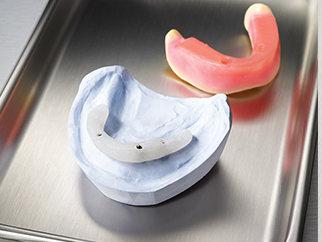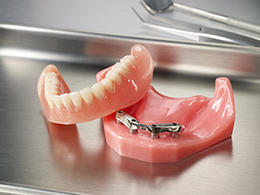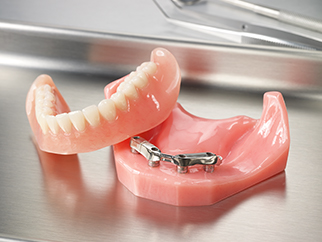Overdenture
Overdenture can be made to fit over a bar or to work with attachments.

Attachment Overdenture
NDX has extensive experience working with direct-to-implant attachments, including the popular Zest Anchor locator abutments. Direct attachments can be a more-affordable option for non-splinted restorations.
Indications
Dental Insurance Codes

Bar Overdenture
For edentulous patients desiring a stable, aesthetic prosthesis, the Implant Bar Overdenture could be the perfect choice to help improve retention, function and speech. A Bar Overdenture connects the patient’s implants to each other via a fabricated bar that helps protect the individual implants by spreading out the bite load. The complete denture then fits securely over the implants for great stability.
Advantages
Indications
Dental Insurance Codes
